
The Email Revolution helped shape instant connection within our world.
The evolution of technology can be a fascinating journey. With evolution comes new ideas, methods and techniques for design, and achieving a goal may sometimes take multiple attempts to achieve. Today, we’ll be looking at electronic mail, the concept for which actually predates the internet in many ways. Let’s break it down and get started
The Beginnings:
The origins of traditional mail were hugely influential on our early societies, with the British placing great value on the important of mail and communication across the globe. Prior to the internet, mail was often carried by steamers and ocean liners, carrying letters, designs and invoices as well as passengers and produce.
 RMS Titanic. Source: Wikipedia.
RMS Titanic. Source: Wikipedia.
These liners were given the designation Royal Mail Ship, or RMS for short. When you see the name RMS Titantic or similar, you can now understand that these majestic liners were essential in keeping the early world connected.
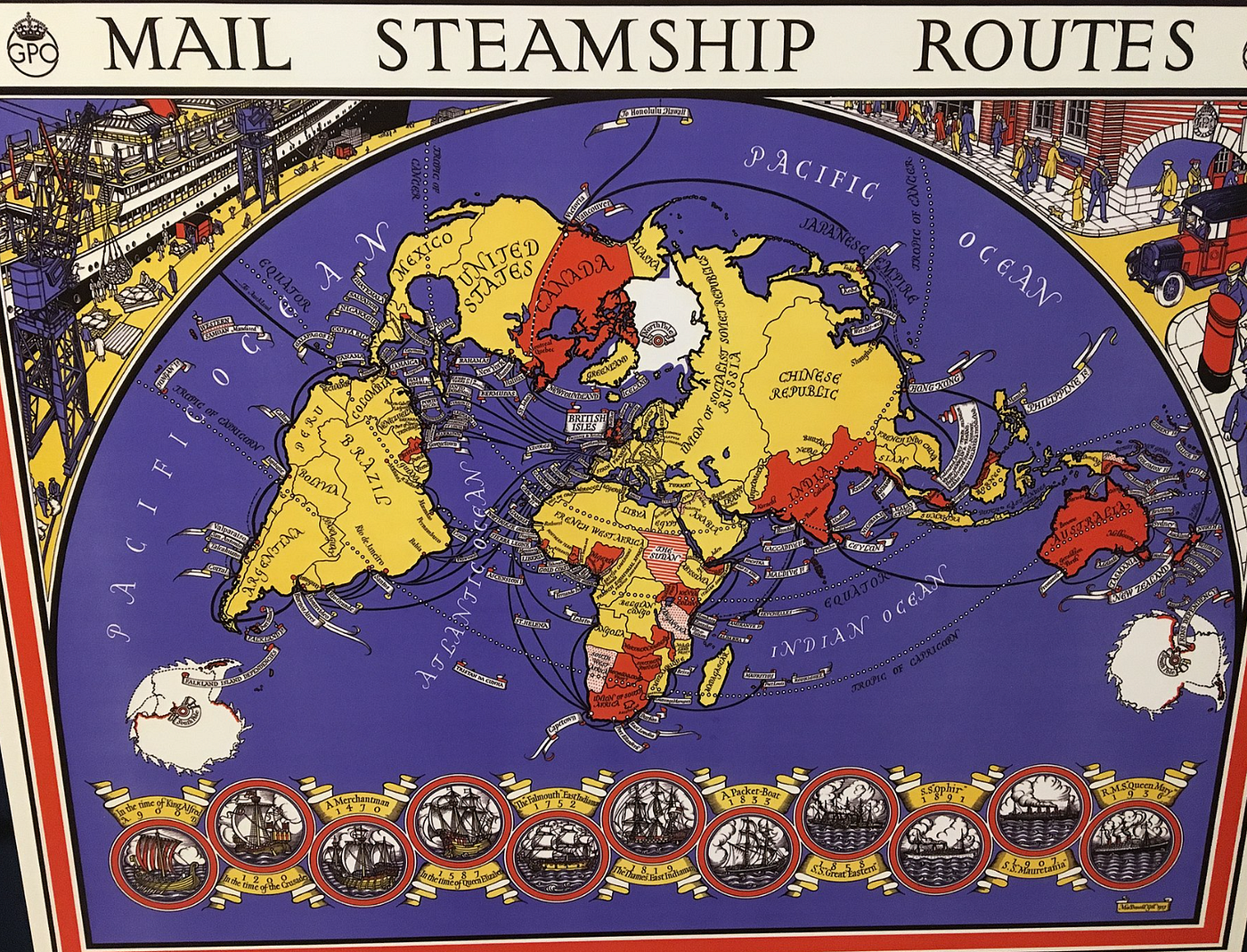 Steamship Mail Routes, using RMS ships. Source: Wikipedia
Steamship Mail Routes, using RMS ships. Source: Wikipedia
Because of this, a special designation was given to both ships and aircraft that were mail carriers, with the Royal Mail Logo being an identifying mark that help to recognize mail carriers. While there’s an early map showing the importance of the mail runs, we’ve also included a pic of the mail logo on an Airbus A320–200 which shows that the mail carriers maintain a sense of importance, even in today’s hyper connected world
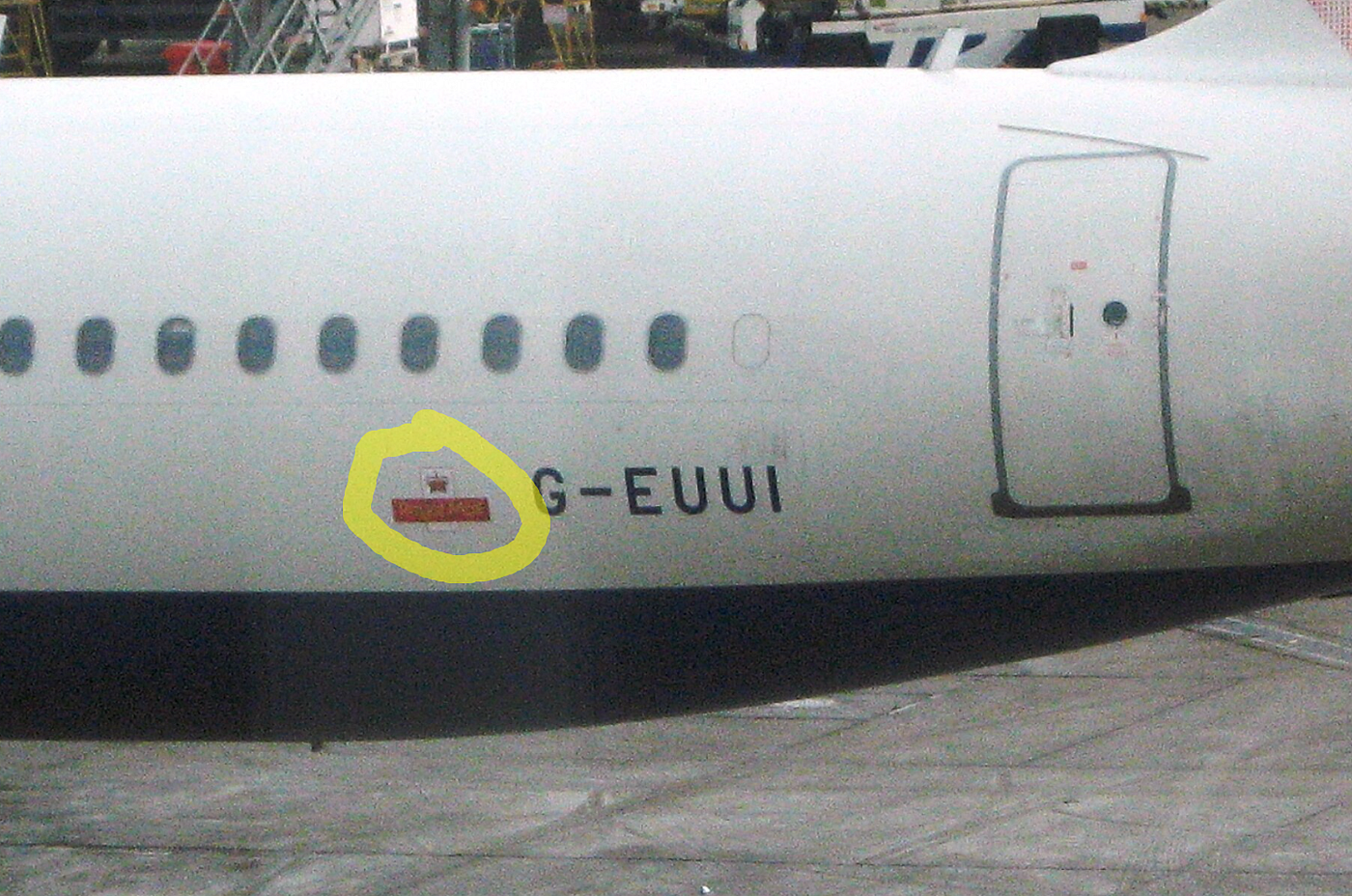 Even Today, mail carriers obtain a special designation. Source:Wikipedia
Even Today, mail carriers obtain a special designation. Source:Wikipedia
However it would take the implementation of a technology we’ve discussed before for E-mail to be given it’s chance, and that chance came with the evolution of time share computing. If time share is of interest to you, check out our previous article on it
First introduced by MIT with their Commercial Time Sharing Service (or CTSS) the first system was a simplified messaging system to allow basic communication within the system, helping to streamline the efficiency of the timeshare service. However at this point, technology was still primitive in comparison to how we use email today, with punch cards, large commercial computers and half duplex digital communication being the de facto standard for the time.
The Proper Start:
It would take another 6 years from the humble CTSS beginnings for email to become similar to how we’d see it today, and the first adoptions for this were laid with the development and release of the early internet, also known as ARPANET.
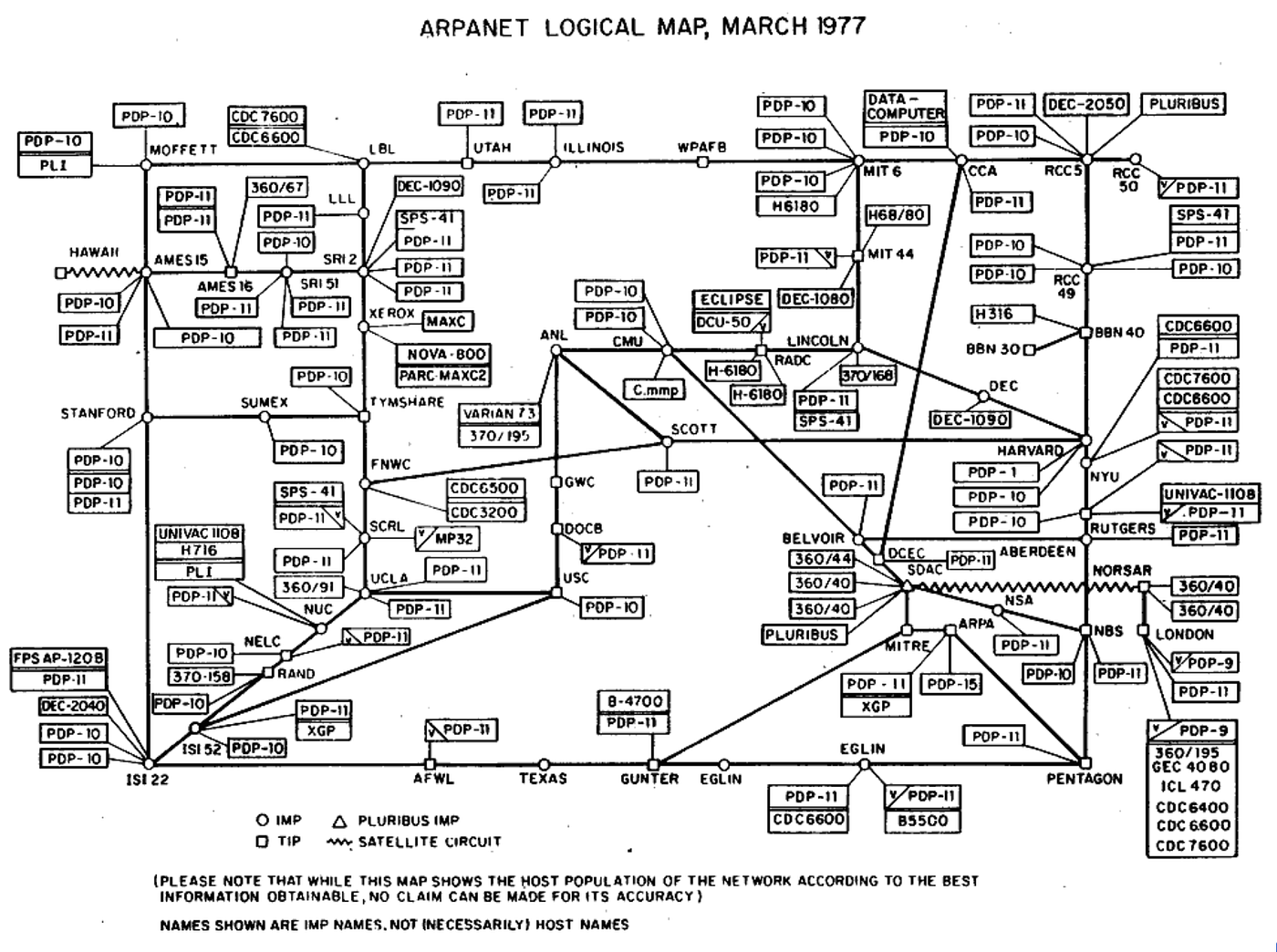 ARPANET map released late 1977, showing government and educational usage. Source: Wikipedia
ARPANET map released late 1977, showing government and educational usage. Source: Wikipedia
Released in 1971, ARPANET was initially closed source, with it only accessible to government and educational institutions, before being opened up to the general public in the later 70's.
Focusing on resource sharing and instant communication, APRANET introduced several of the features that we see in today’s email systems including the well known @ symbol, for address routing, and TCP/UDP connection protocols. Messages were also split in to two sections, with header and body sections.
ARPANET also came with it’s own Easter egg on implementation. While the first command was supposed to be “login”, the terminal froze after the first two inputs. So rather than a dramatic phrase and opening for the history books, the first characters actually transmitted across ARPANET was “lo”, a much less iconic phrase and shortened version of “login”
Mainstream Adoption:
Using our good friends Bob and Alice, we can see how email is routed and sent across a network using the infogram below.
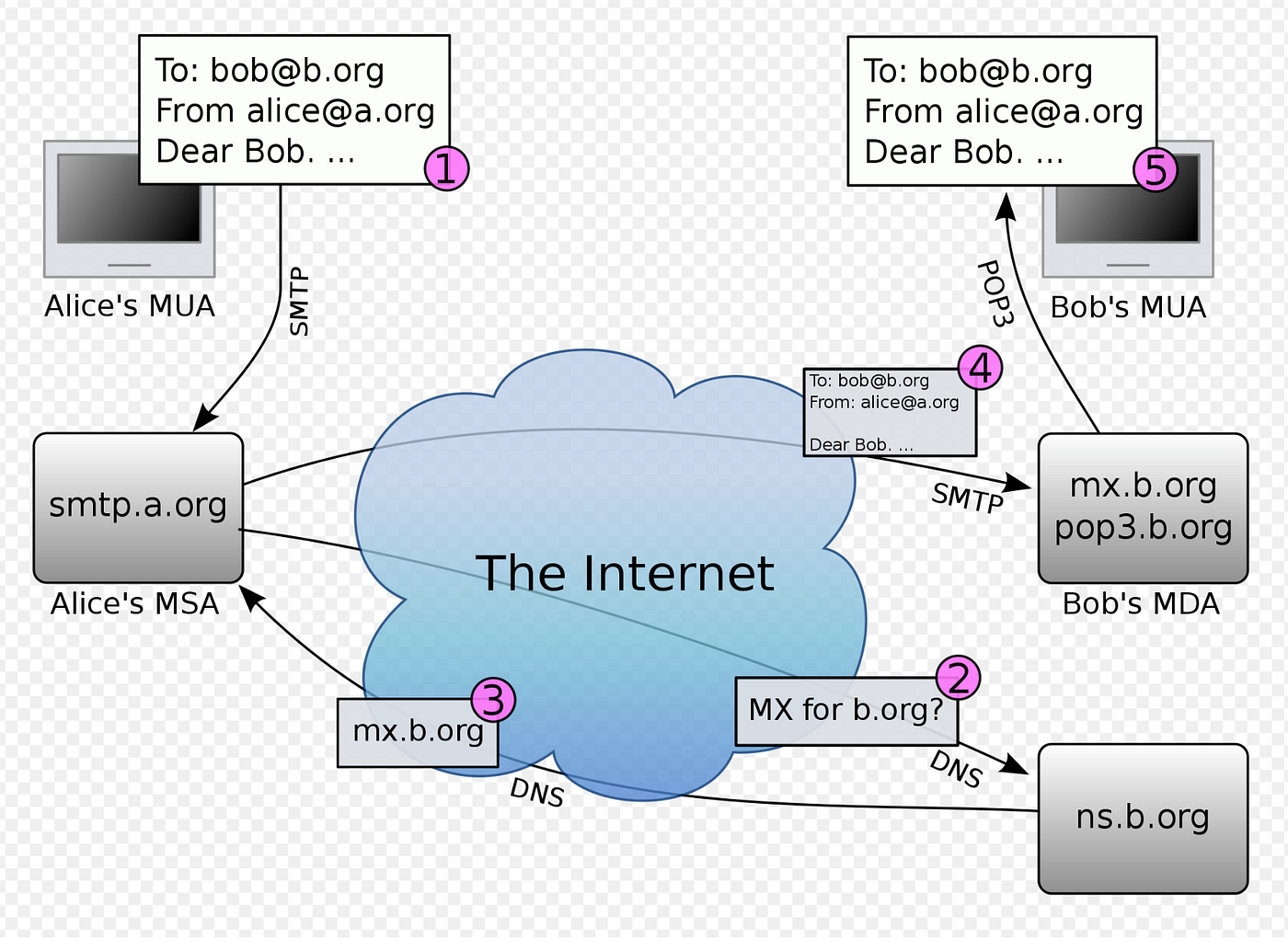 Routing table for early pop3 email systems. Source: Wikipedia
Routing table for early pop3 email systems. Source: Wikipedia
As mail developed we saw more flexibility in routing, sending and delivery, with the implementation of web mail based apps for both sending and receiving email as well as providing the additional benefit of bringing email to the masses.
Different format’s such as POP3 (Post Office Protocol) and SMTP (Simple Mail Transfer Protocol) were also essential in bringing the formats together, providing a form of unity and compatibility that integrated with existing systems. This was an exciting time, with propitiatory formats and standards being traded out for open sourced methods and formats that allowed for growth, easy implementation and the ability to be streamlined for mass adoption. We’re starting to get close to the connected world now!
As we look at mainstream adoption, it’s important to realize this development doesn’t happen in a vacuum. As we dealt with standardization of mail formats, we also had the implementation of cloud computing, the mainstream adoption of business computing and the development of instant messaging all taking hold around the same time. The adoption of these new technologies was an exciting time.
While for some time, we had the telegraph that enabled the light speed transmission of messages usually only priority messages would be transmitted down the wire. While telephone and high frequency radio also existed, it’s important to realize that their accessibility was not mainstream, and the technology could still take time to get it’s message away in a clear manner. Read about the early development and limitations of trans continental telegraphy in our article on fiber optics.
Email revolutionized all these formats nearly overnight, providing near instant communication with extreme reliability allowing global and political entities fast, reliable communication world wide.
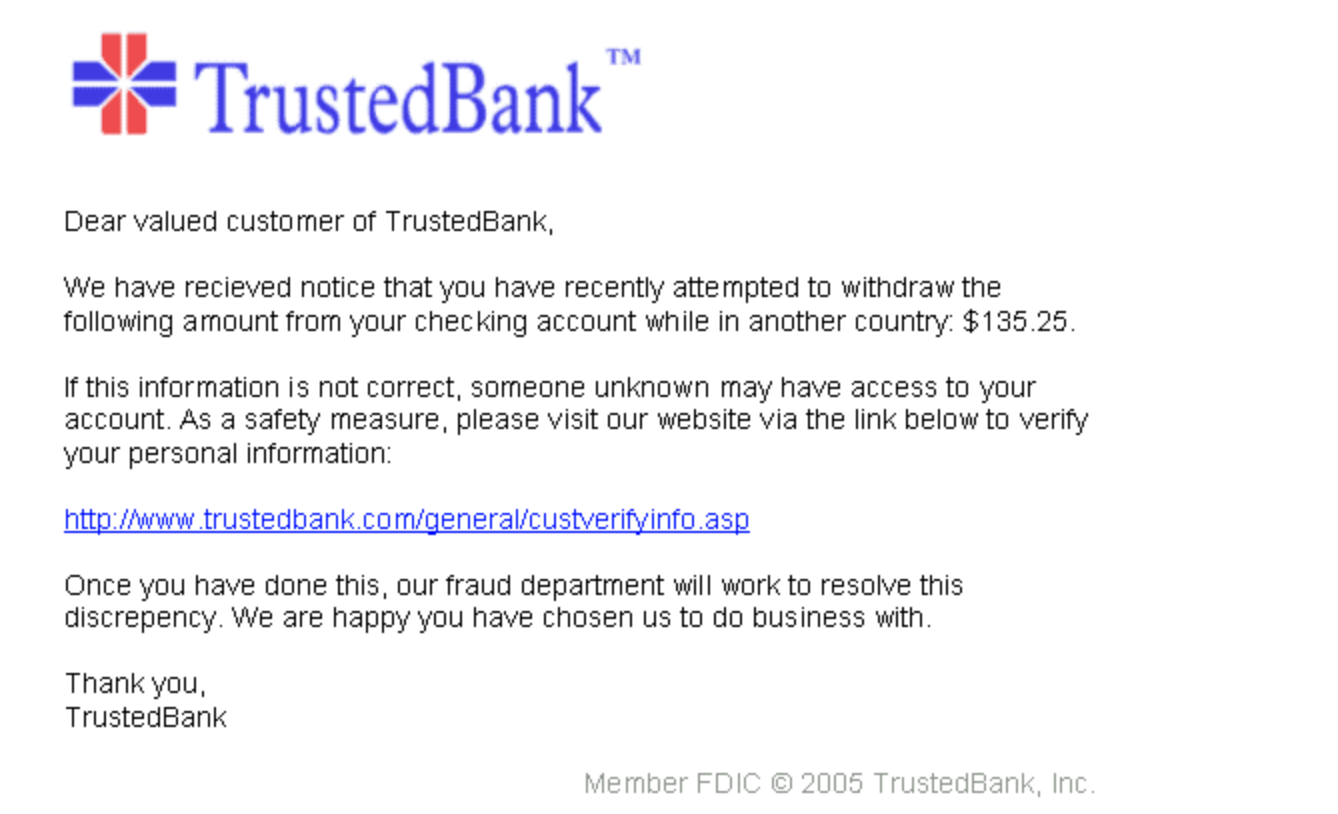 Phishing in particular, is a problem. Source: Wikipedia.
Phishing in particular, is a problem. Source: Wikipedia.
Present Day:
Like many earlier technological innovations, the adaption of new technology provided changes to industry as well as attracting criminal elements as well.
Fields like marketing and analysis adapted to the implementation of email, providing new ways to reach customers. It also spawned whole new professions as well, with data analysts and marketers being some of the first to leverage “big data” strategies bringing new career opportunities into the mix. However as privacy advocates we feel there’s an additional point to make with regards to the implementation of email that revolves around privacy and the acceptance of advanced tracking and analytics.
In the early days while tracking existed and was present, it was far simpler and mostly revolved around stopping malicious attachments and preventing spam. However the occurrence of 9/11/2001, upped the ante, with additional content scanning and analysis, which eventuated into the ECHELON program which monitored electronic communications, including email, facsimile and instant messaging services. While the scope of ECHELON is outside a single article, it’s worth a mention as it laid the foundation for today’s advanced analytics that we see online, with email analytics and tracking being no different.
Cybercriminals and nation states were also quick to exploit this new medium, with many using email to perpetuate and maintain scams that included phishing and social engineering attacks. Email is a particularly useful vector for these attacks for a number of reasons.
Firstly, they are easily available, with many people seeing little value in protecting their primary email address. Secondly it’s a personalized form of communication with cyber criminals able to compile phishing attempts that are directly crafted with their target in mind, with the requirement for success being little more than said target clicking on a malicious link within said email. While you’d think technology would evolve to make this less prevalent, the fact remains that scamming and phishing are still everywhere today.
Into the Future:
While email changed how we communicate, it’s also liable to same the fluctuations many traditional media formats take with regards to numbers and adoption ebbing and flowing. While email won’t be going anywhere for a while, we see new adoptions in technology by the younger generations. This means that instant messaging has increased in popularity and mainstream adoption with services like messenger, whats app and telegram proving extremely popular.
However the adoption of AI will bring new challenges to email, in particular dark side of it. There’s research showing how tools like chatGPT and other AI alternatives can be used to craft personalized phishing email attacks, providing malicious actors with additional vectors to establish their attack foot hold.
We also see far more commercialization of email, with many preferring to use Gmail, Outlook and other free services over using a custom domain paired with an email client. This is typically because outlets such as Google have turned Webmail into a one stop shop with calendars, notes and other features ready to use within a web browser. While this provides convenience, fast adoption and can be done for free, unfortunately this does have a cost with regards to personal personal privacy.
What the Tech?! is our recurring, twice monthly piece on the technology that was essential in shaping our modern word
?? Enjoyed this article? Support our work and join the community! ??
?? Support me on Ko-fi: Investigator515
?? Join our channel for exclusive updates or.
?? Follow us on
?? Articles we think you’ll like:
- OSINT Unleashed: 5 Essential Tools for Cyber Investigators
- What the Tech?! GPS Technology
?? Want more content like this? Sign up for email updates











